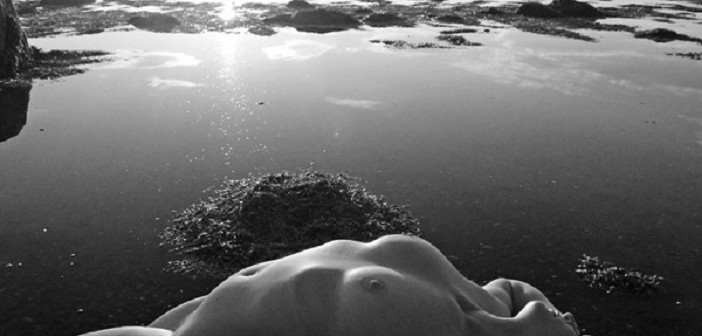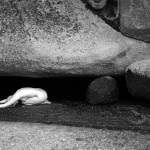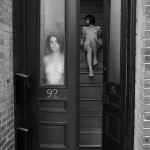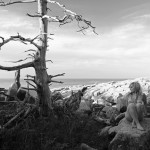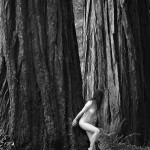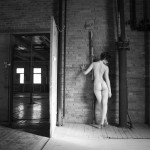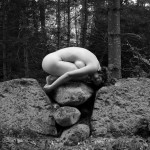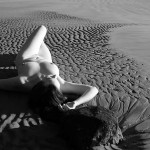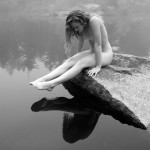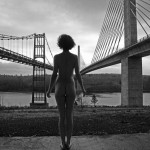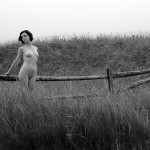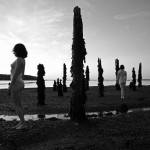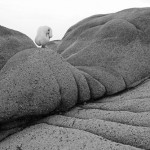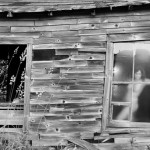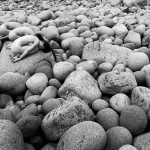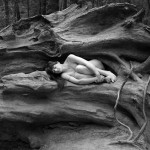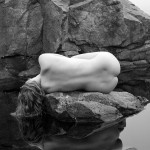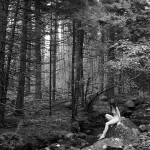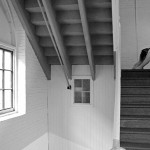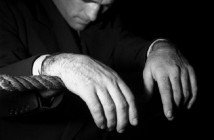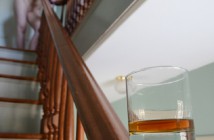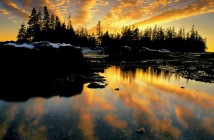TD knew from the beginning that high-end whisky drinkers have an unusually high affinity for photography and art. We discovered this in a Macallan marketing study that they used to help rebrand their products three years ago. So we have brought you the distinctive and imaginative art ofRalph Steadman, the fashion and personality photography of George Dambier from the late 1940s in Paris, pinhole photography fromAnthony Browell “Down Under,” and stunning landscape photography from Terrell Lester’s four seasons in Maine with mirrored landscape images by Ian Horne in Scotland. TD has recently teamed up with Charles Dufour on several posts with photography that beautifully and imaginatively captures the “naked beauty of Mother Earth.”
TD used Dufour’s photography for a “classics update” for Andrew Wyeth’s “Christina’s World” and for a visually interesting post on Robert Burns’ poem “Tam O’Shanter” that reveals the origins of Cutty Sark’s name.
Now we introduce the artist behind those photographs. Following is an exclusive TD interview with Charles Laurier Dufour from Belfast, Maine. It feels like a graduate school lecture on art and photography.
TD: I imagine that photographers are like medical students: at some point they need to decide what their specialty is going to be—pediatrics or surgery. At what point did you decide that nude photography was going to be your specialty?
CLD: Growing up in far Northern Maine, I’ve always been a nature enthusiast. Most of my artwork would more accurately be described as nature photography that includes the human figure as a critical component of the overall composition. Quite literally, my artwork is au naturel.
That said, my introduction to the use of nude models was part of a project in the mid-90s that focused on superimposing nude characters into various settings. These ghostlike characters represented spirits traveling through our space. I surmised that if there were human “spirits,” they wouldn’t be wearing spandex or cotton blend sheets, but rather they’d be wholly and simply human in appearance. So I used nude models.
A few years later, I returned to live in my home state of Maine. Now, every day, incredible landscapes and seascapes surround me. With my experience working with nude models, it seems only natural to me to have the human form represented in my captures of the naked beauty that is our mother, Earth. [See photography gallery below for examples. Click on any image and it turns into a slideshow you can control. Captions provided by CLD.] If even one person sees my natural fine art nudes and considers that we’re not simply on this Earth, but rather, we are OF this Earth, maybe they’ll also realize that any damage to our planet is damage to ourselves. Maybe they’ll walk away with a little more respect for our magnificent, but fragile, planet.
TD: Are the challenges of nude photography any different than the challenges all photographers face?
CLD: I don’t know that I can confidently answer that with a broad stroke, but I can say that, for my style of nude photography, often my challenge is producing an image that is about the entire composition, not about the model. Whether the piece is narrative or else is simply a “pretty picture,” rarely do I intend for it to be interpreted as crossing into the realm of the “erotic”. Nude for me is about the natural beauty of the form, the lines, the shadows, the curves, the negative space, the angles. Not something sexual. Or, at least, not only sexual. Sadly, in my opinion, sex is the only place the artistically unenlightened choose to go—which is most people, I suppose. If someone looks at the body of my work and thinks it’s all about sex, or else all they see is someone naked, well, that speaks volumes about them and not my work. So to reiterate, my challenge is to create a beautiful nude photograph that is obviously classifiable as “fine art” and not “erotica”.
TD: You do a remarkable job of blending your models with their environment, whether that’s a bolder, a block of wood, a tree, an open field. Do you have those images in your mind and then you go out and find the locations, or does this happen on site, in passing, more serendipity?
CLD: To answer this question, I first need to give some perspective. It comes down to recognizing the geometric shapes and the light variations in my present environment. As an artist, I see lines, angles, curves, shade, light, shapes, etc, everywhere all the time. I know everyone can see these things, but I’m saying that some artists deconstruct their visual environment into more basic elements. It just happens without effort—it’s an automatic rather than controlled mental process. So, upon arrival to a shoot location, I scan my visual field and recognize the geometric elements and light. Then I introduce my figure models and I place him/her/them in specific locations and in poses that create balance within my camera’s frame. It’s a reconstruction from the deconstruction. That’s the magic of understanding composition: you just know when it’s right. I’m sure it’s the same with writers, musicians, chefs, craft beer brewers and whisky distillers, and all other creative people. You just know it when the balance, the composition, is right.
Now, to get back to your question, I generally find locations in passing and go back some other time with a model. While I may head out for a shoot with a preconceived idea for a few of the shots, mostly the process is organically borne in the moment. I mentally process my visual field as I described above, and make decisions about my composition. It’s problem solving on the spot, and I love that type of challenge. If all goes well, I’ll be pleased when I look at my images on the computer screen later. For my style of shooting, most of the creative work should be complete by the time I depress the shutter.
TD: When did your interest in photography begin? Do you remember your first snaps?
CLD: I owned an instamatic camera using 126 film in high school in the mid-to-late 70s. I’d shoot landscapes and take casual shots of friends. I purchased my first 35 mm SLR in college and enrolled in a darkroom course. Other than a refresher darkroom course in the 90s, that’s the extent of my photography training. That’s the main reason I consider myself to be an artist who uses a camera rather than a true photographer. I’m self taught.
TD: When I look at your images I sometimes see Imogene Cunningham? Is that fair? Are there any photographers who have influenced your work?
CLD: I find it interesting when people see influences in my work that I myself don’t. Perhaps I miss the obvious. Other than Wyeth’s Christina’s World, I haven’t interpreted works by other artists, and I have no formal background in art. I do have a list of artists whom I admire, but I believe my own work is pretty naïve. Among my favorite artists are painters Pablo Picasso, Rene Magritte, Henri Matisse, and Salvador Dali, and photographic artists Arno Minkkinen, Sally Mann, Joel Peter Witkin, Jerry Uelsmann, and Diane Arbus.
TD: Whisky drinkers love to discuss whether or not a particular whisky is smoky or bold, delicate or light. One man’s smoky is another man’s bold. My daughter says guys talk about their women that way. You are around women “all the time.” Do you see any of that in your models?
CLD: I don’t know what guys your daughter tends to surround herself with, but I’m not one of those guys, I guess. Categorizing and generalizing about models in that way, well, I imagine some “guys with cameras” do that, but I don’t believe true artists do that. Perhaps I’m sounding arrogant or self-righteous, and I certainly don’t mean to; what I’m trying to say is that each model is an individual with his/her own look, shape, attitude, flexibility (in body and mind), expressiveness, tolerance, intelligence, and experience. Just as in my personal life, I try not to be the type of person who generalizes and stereotypes others. I can, and sometimes I do, but I just try not to. I have plenty of experience in life showing me that generalizing and categorizing often has the effect of clouding judgment and limiting creative potential by making the focus on the common features instead of the individual differences. Each model has her/his own unique combination of attributes to contribute to the artistic process, and discovering that combination will probably be easier if my eyes are wide open.
TD: What can you tell us about your models? How long have you been working with them? Do you have a team approach when you do a photo shoot or do you direct the shot to get what you want?
CLD: I operated my own independent gallery of my artwork for 10 years on the coast of Maine. In that time, thousands of people made their way into the gallery and saw walls filled with large framed prints of my work. Most of my customers were women, which I learned is actually the norm for purchasers of artistic nudes regardless of medium. A percentage of browsers would comment on how strongly they were affected by seeing my work. When that happened, I’d tell them that most of the models were volunteers who also were moved by the work. Some of those people would then volunteer. Having photographed about 200 people in 10 years, a grand majority of them were volunteers as just described. A few models were professional models, and a few were people who started out as friends or who became friends from modeling for me. I’m also available for hire to do commissioned shoots of fine art natural nudes, but those images only end up on the walls or the computer screen of the person hiring me for the commissioned shoot.
Because almost all of my models are volunteers who have never modeled before, I am quite directive to obtain the shot I’m looking to create. It has happened a few times that a professional model has brought her own bag of “poses” with her and it’s worked well with me, but mostly I’m very much the creative director from start to finish.
TD: Are you a whisky drinker? If so, what are some of your favorites?
CLD: While I certainly appreciate all fine spirits, I’m primarily a craft-beer drinker. I love dry red wines and will occasionally appreciate a single malt, a brandy, or a cognac. My favorite single malts have been Dalwhinnie and Glenmorangie, although in my younger days I’d regularly have two fingers of Cutty Sark straight up beside my beer at the bar. My favorite local watering hole is Three Tides and Marshall Wharf Brewing Company in my hometown of Belfast, Maine. They have a relationship with Bowmore. MWB regularly ages specialty beers in Bowmore bourbon and sherry butts that are shipped directly from Scotland when Bowmore is through with them. Those are only available at the brewpub. The smoky and peaty complexities obtained from those barrels make for some mighty fine brews!
TD: We like to write about the whisky experience on our site, not just tasting notes. What was your first whisky experience? Did your grandmother slip you a nip?
CLD: I come from Northern Maine where Acadian French is spoken as commonly as American English. Our French classes in high school were far more advanced than a typical college French class. In my junior year in high school, I was one of the actors in a locally written/produced play as part of my French class. My character, Gassoune Thibodeau, was a drunkard in that play, so I had to be on stage drinking “whisky” from a pint bottle. Little did the audience know, but I was actually drinking Canadian Club with sour mix on stage in public at the tender age of 17. Also, I have fond memories of night snowshoeing with friends in high school to a camp in the woods and passing around a bottle of Lord Calvert to warm up while the woodstove was being lit. It was a different era, wasn’t it? Oh boy…
TD: Any new projects you are working on?
CLD: I have no shortage of ideas, so I’m always working on new projects. I plan to create a few “whisky” fine art nudes for TD in the coming months (stay tuned).
TD: For more of CLD’s photography, go to his website here.

